For most of Earth’s history, world had no green trees, no colorful flowers, and no grassy fields. Life was abundant, but it was all hidden beneath the waves in the oceans. Then, 500 million years ago something truly revolutionary happened: plants began to move onto land. Understanding the earliest land plants adaptation is key to knowing how our green world came to be. This incredible journey transformed barren rocks into lush landscapes, paving the way for all the land animals we see today, including us!
Don’t Miss This!
After reading, challenge yourself with our interactive quiz at the end. Click here to take the Quiz
Table of Contents
The Aquatic World
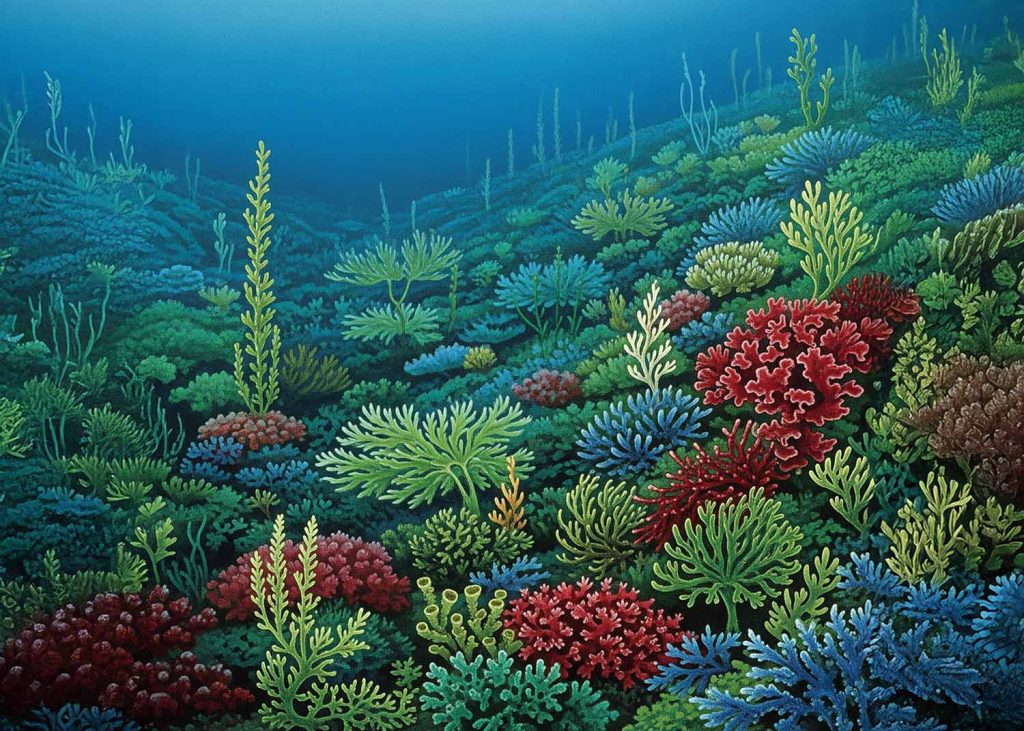
Before plants moved onto land, Earth’s life was confined to the oceans, dominated by algae and other aquatic organisms.
For billions of years, the only plants on Earth were algae. These simple, plant-like organisms lived entirely in the water. They used sunlight to make their own food, just like modern plants. The oceans were full of them, forming the base of the aquatic food web. But outside the water, the land was a harsh, empty place. It was just bare rock, constantly battered by wind and sun.
Life in the water was comfortable for algae. They were supported by the water, didn’t dry out, and could easily get nutrients from their surroundings. But the land offered a huge, untapped resource: direct, unfiltered sunlight. The challenge was surviving the extreme conditions outside the water.
Fun Fact: The green algae that lived in ancient waters are the direct ancestors of all land plants. They already had chlorophyll, the green pigment that captures sunlight, which gave them a head start for life on land!
The Challenges of Land Life
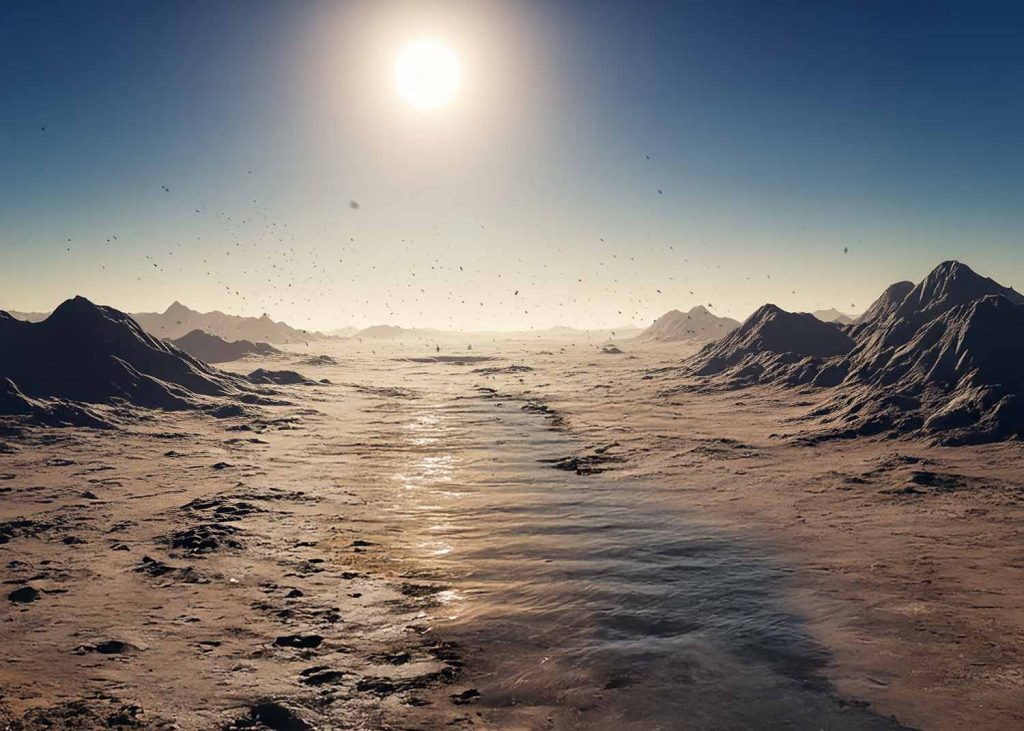
Moving from water to land presented huge challenges for early plants, including drying out and fighting gravity.
Moving from a watery home to dry land was a huge step. Early plants faced many new problems. These challenges drove the earliest land plants adaptation:
- Drying Out (Desiccation): In water, plants are always wet. On land, they can quickly dry out from the sun and wind.
- Gravity: Water supports plants. On land, they needed a way to stand upright against gravity.
- Reproduction: In water, spores and gametes (plant “seeds”) could float freely. On land, they needed new ways to reproduce without water.
- Nutrient Uptake: In water, plants needed a way to get water and minerals from the ground.
- Sunlight: While more sunlight was available, too much could be harmful.
These were big problems to solve. But over millions of years, plants developed amazing solutions.
Key Adaptations for Survival
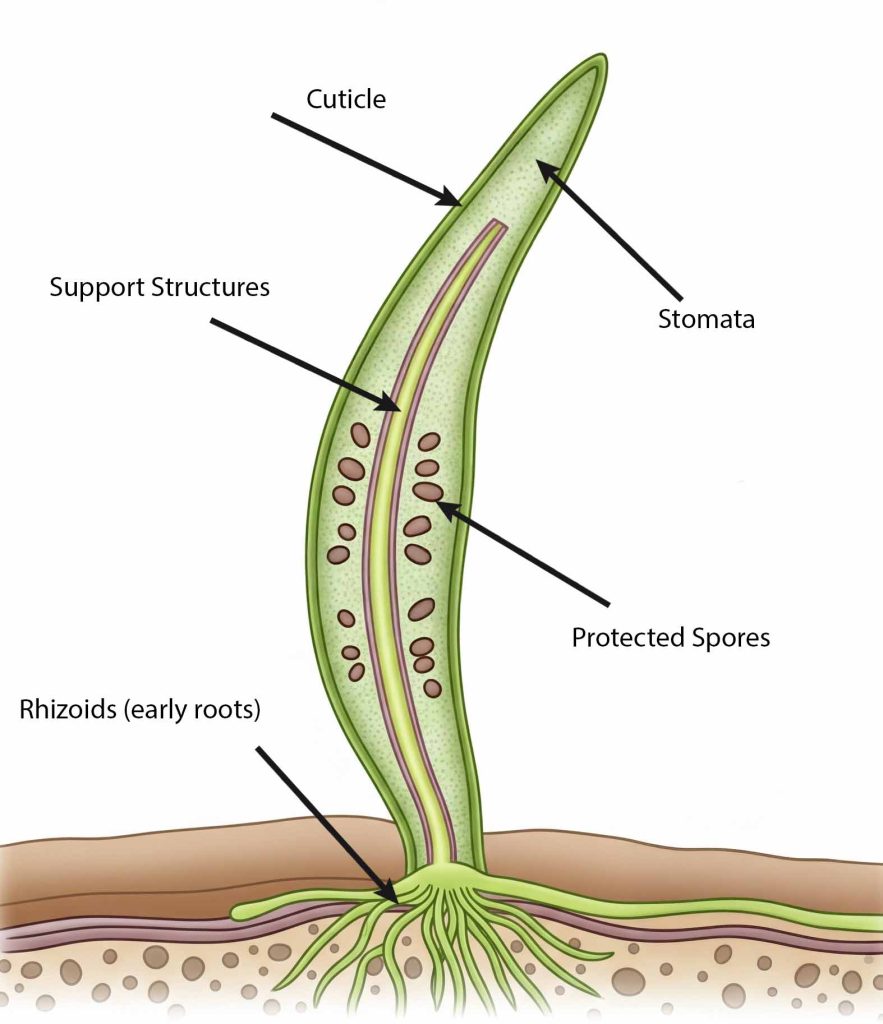
Early land plants developed crucial features like a waxy coating and tiny pores to survive out of water.
The first plants to successfully live on land developed several key features. These were the crucial earliest land plants adaptation:
- Cuticle: A waxy, waterproof layer on their outer surface. This was like a natural raincoat, stopping water from evaporating too quickly.
- Stomata: Tiny pores on their surface, mostly on leaves. These could open and close to let in carbon dioxide for photosynthesis and release oxygen, while also controlling water loss.
- Rhizoids (early roots): Simple root-like structures that anchored the plant to the ground and absorbed water and nutrients. Later, true roots with vascular tissue would evolve.
- Protected Spores: Early land plants reproduced using spores. These spores developed tough, protective coatings (called sporopollenin) that prevented them from drying out in the air.
- Support Structures: While simple at first, some plants developed stronger cell walls and eventually woody tissues to stand upright against gravity.
These adaptations allowed plants to survive and even thrive in their new, challenging environment.
Fun Fact: Sporopollenin, the tough stuff that protects spores, is one of the most durable organic materials known to science. It’s so tough that it can survive in the fossil record for hundreds of millions of years, giving scientists direct evidence of early plant life!
Mosses and Liverworts
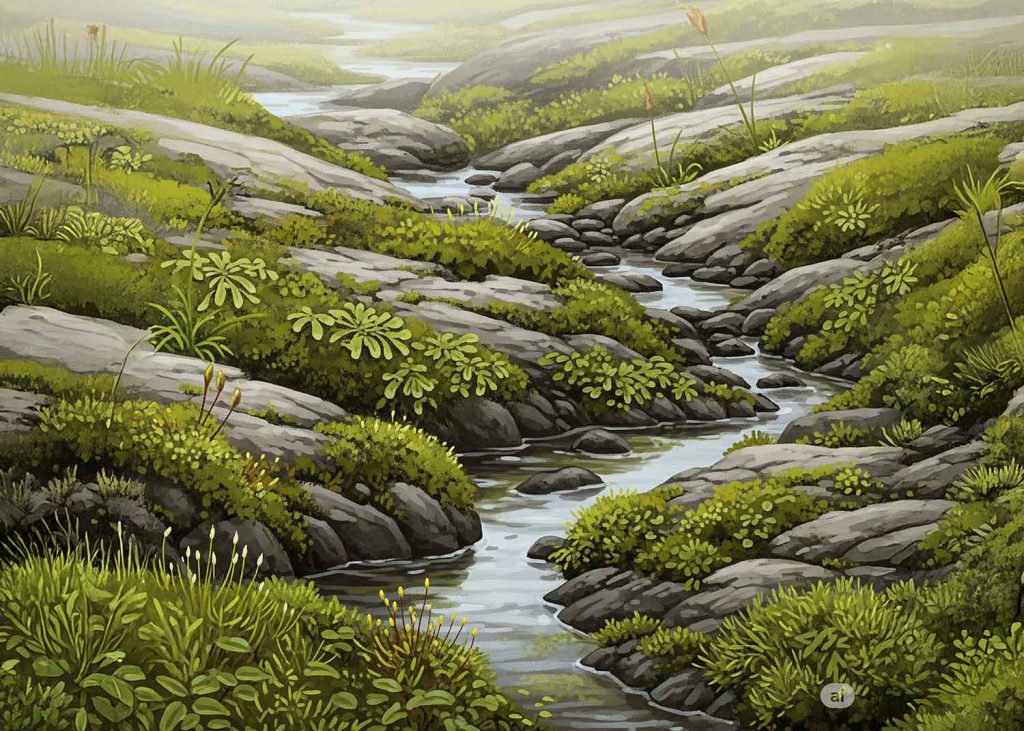
Mosses and liverworts, simple non-vascular plants, were among the first to colonize land.
The very first land plants were likely similar to modern bryophytes, such as mosses and liverworts. These plants are still quite simple. They don’t have true roots, stems, or leaves. They also need a moist environment to reproduce, as their sperm still needs water to swim to the egg. This shows their strong connection to their aquatic ancestors.
Despite their simplicity, these pioneers were incredibly important. They started to break down rocks, creating the very first soils. They also added organic matter to the land, making it a more hospitable place for other life forms. Their success was a crucial step in the earliest land plants adaptation story.
The Rise of Vascular Plants
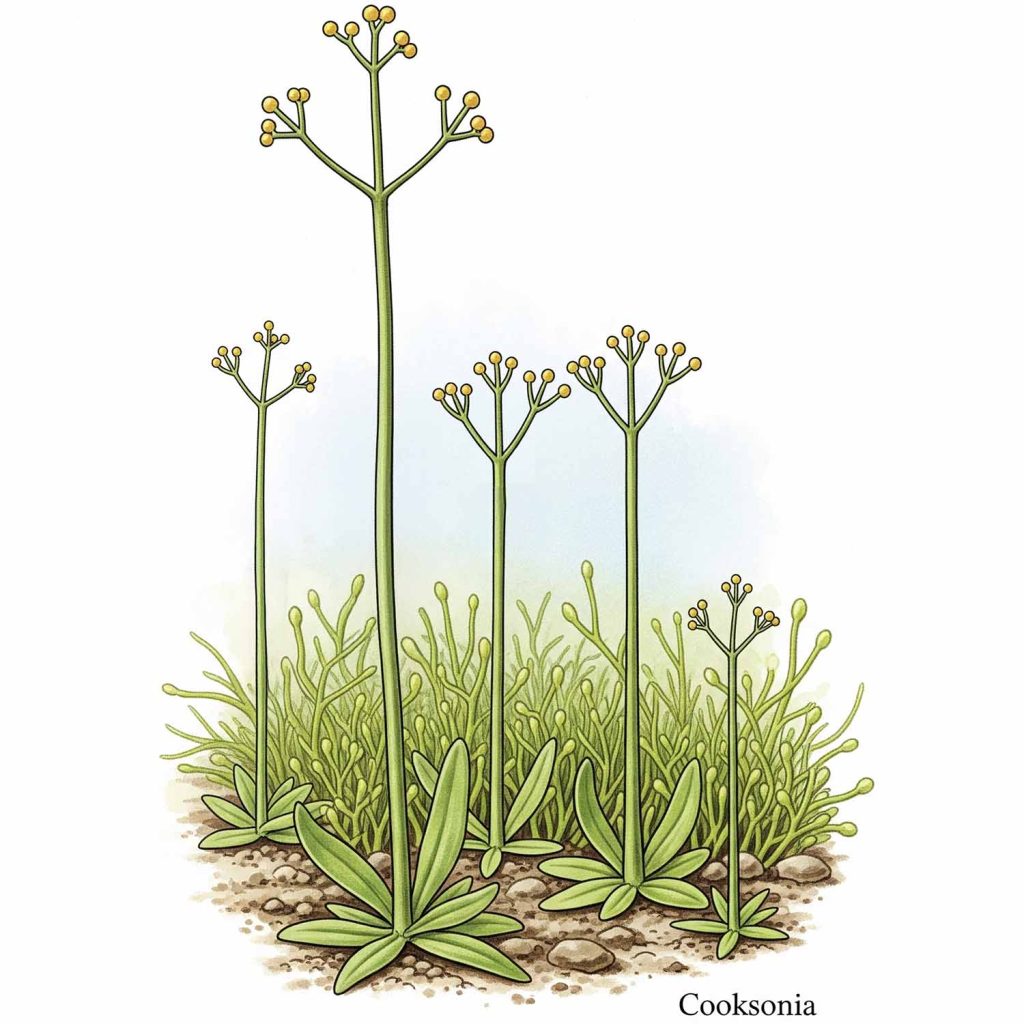
The development of vascular tissue allowed plants to grow taller and spread further from water.
A major breakthrough in plant evolution was the development of vascular tissue. This is like a plumbing system inside the plant, made of two parts:
- Xylem: Carries water and minerals from the roots up to the rest of the plant.
- Phloem: Carries sugars (food) made during photosynthesis from the leaves to other parts of the plant.
Vascular tissue allowed plants to grow much taller, reaching for more sunlight. It also meant they could transport water and nutrients more efficiently, allowing them to live in drier places, further away from water sources. The first vascular plants, like Cooksonia, appeared around 425 million years ago. This was a huge leap in the earliest land plants adaptation.
Fun Fact: The first forests on Earth were not made of giant trees like today, but of large, fern-like plants that could grow up to 30 feet tall! These ancient forests created the first shady environments on our planet.
Transforming the Planet
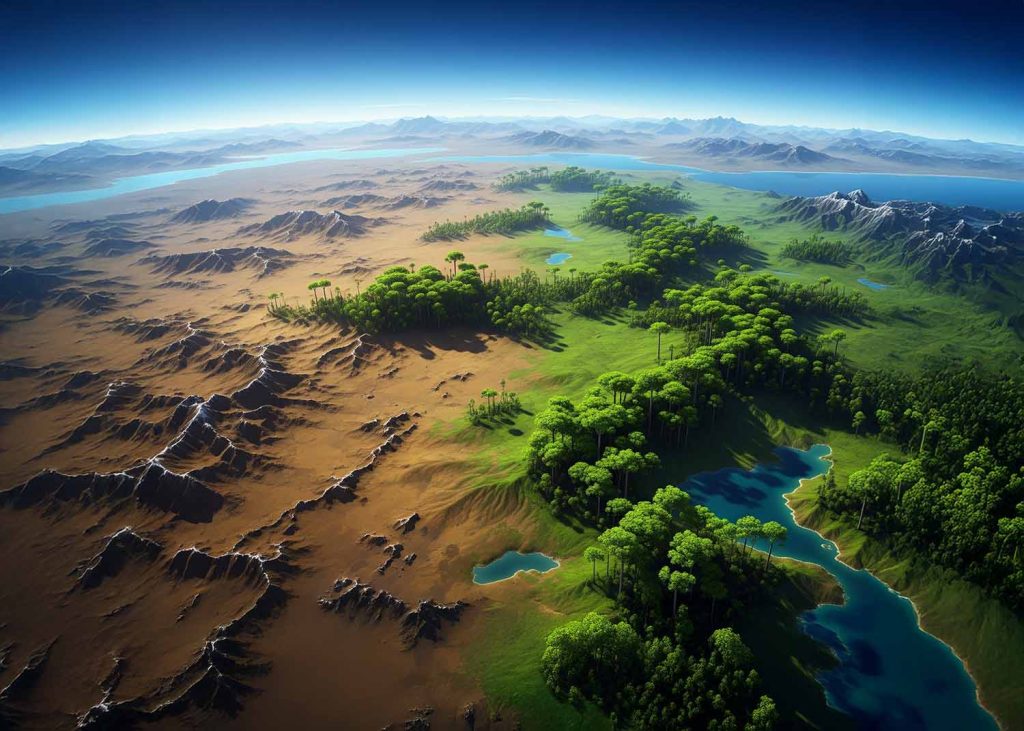
The spread of land plants dramatically changed Earth’s surface, creating new habitats and altering the atmosphere.
The colonization of land by plants had a massive impact on Earth. It was a “green revolution” that changed the planet forever:
- Soil Formation: Plants helped break down rocks and added organic matter, creating the first true soils.
- Atmosphere Change: Through photosynthesis, plants released huge amounts of oxygen into the atmosphere, leading to higher oxygen levels. This was vital for the evolution of large land animals.
- New Habitats: The dense plant cover created new environments and food sources, paving the way for insects, amphibians, and eventually all other land animals.
- Climate Regulation: Plants influenced global climate patterns by absorbing carbon dioxide.
The earliest land plants adaptation was not just about plants surviving; it was about them actively shaping the planet to make it suitable for all terrestrial life. It was a monumental achievement in Earth’s history.
The Legacy of the First Land Plants
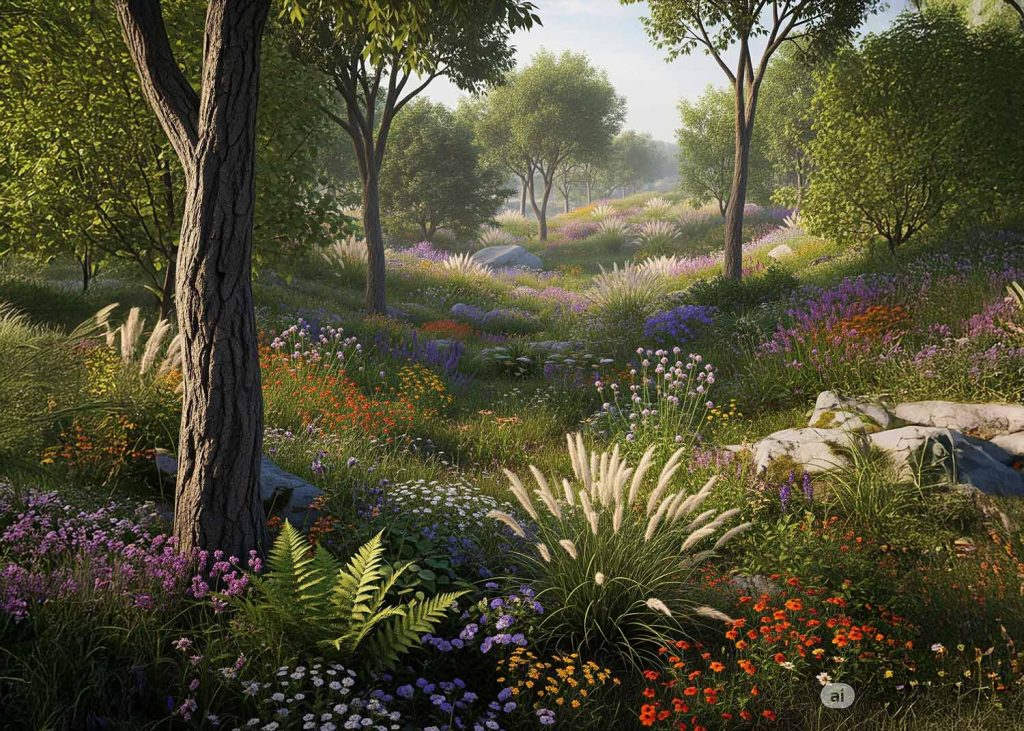
Every green thing you see today is a testament to the incredible journey of the first plants to conquer land.
Every tree, every flower, every blade of grass you see today is a direct descendant of those brave pioneer plants. Their journey from water to land was a testament to life’s ability to adapt and innovate. The earliest land plants adaptation laid the foundation for all terrestrial ecosystems. Without them, our world would still be a barren, rocky place, devoid of the vibrant life we cherish.
This story reminds us of the deep connections between all living things and the incredible power of evolution to transform a planet. To learn more about how animals followed plants onto land, check out our article on How Fish Evolved to Walk on Land.
Earliest Land Plants Adaptation Quiz
Test your knowledge about how plants conquered the land!
Notes:
1️⃣ Green Algae Ancestors:
The closest living relatives of all land plants are the green algae called charophytes. These freshwater algae share key traits with early land plants, like cell division structures and the presence of chlorophyll a and b. (Graham et al., 2000. Nature.)
2️⃣ Earliest Land Plants Timeline:
Fossil spores and microfossils suggest that simple non-vascular plants (like bryophyte ancestors) began colonizing moist land areas around 470–500 million years ago, during the Ordovician Period. (Rubinstein et. al. , 2010. New Phytologist.)
3️⃣ Key Adaptations:
The waxy cuticle and stomata were crucial evolutionary innovations that helped plants manage water loss and gas exchange. Protective sporopollenin, found in spores and pollen, is one of the most chemically resistant organic compounds known. (Lingyao Kong et al., 2007, Origins and Evolution of Cuticle Biosynthetic Machinery in Land Plants.)
4️⃣ Cooksonia and Vascular Plants:
Cooksonia is one of the earliest known vascular plants, appearing about 425 million years ago in the Silurian Period. Its simple branching stems contained primitive xylem for transporting water. (Edwards et al., 2007, The earliest vascular land plants.)
5️⃣ Formation of Ancient Forests:
The first tree-like plants, like Archaeopteris, formed the Devonian forests around 380 million years ago. These forests were dominated by large ferns, horsetails, and primitive seed plants, dramatically altering Earth’s atmosphere and soils. (Howard S Neufeld, 2010. The Emerald Planet.)
6️⃣ Global Impact:
The spread of land plants helped break rocks into soil, increased oxygen levels through photosynthesis, and contributed to the long-term drawdown of atmospheric CO₂, which affected Earth’s climate. (Tais Wittchen Dahl, The impacts of land plant evolution on Earth’s climate.)

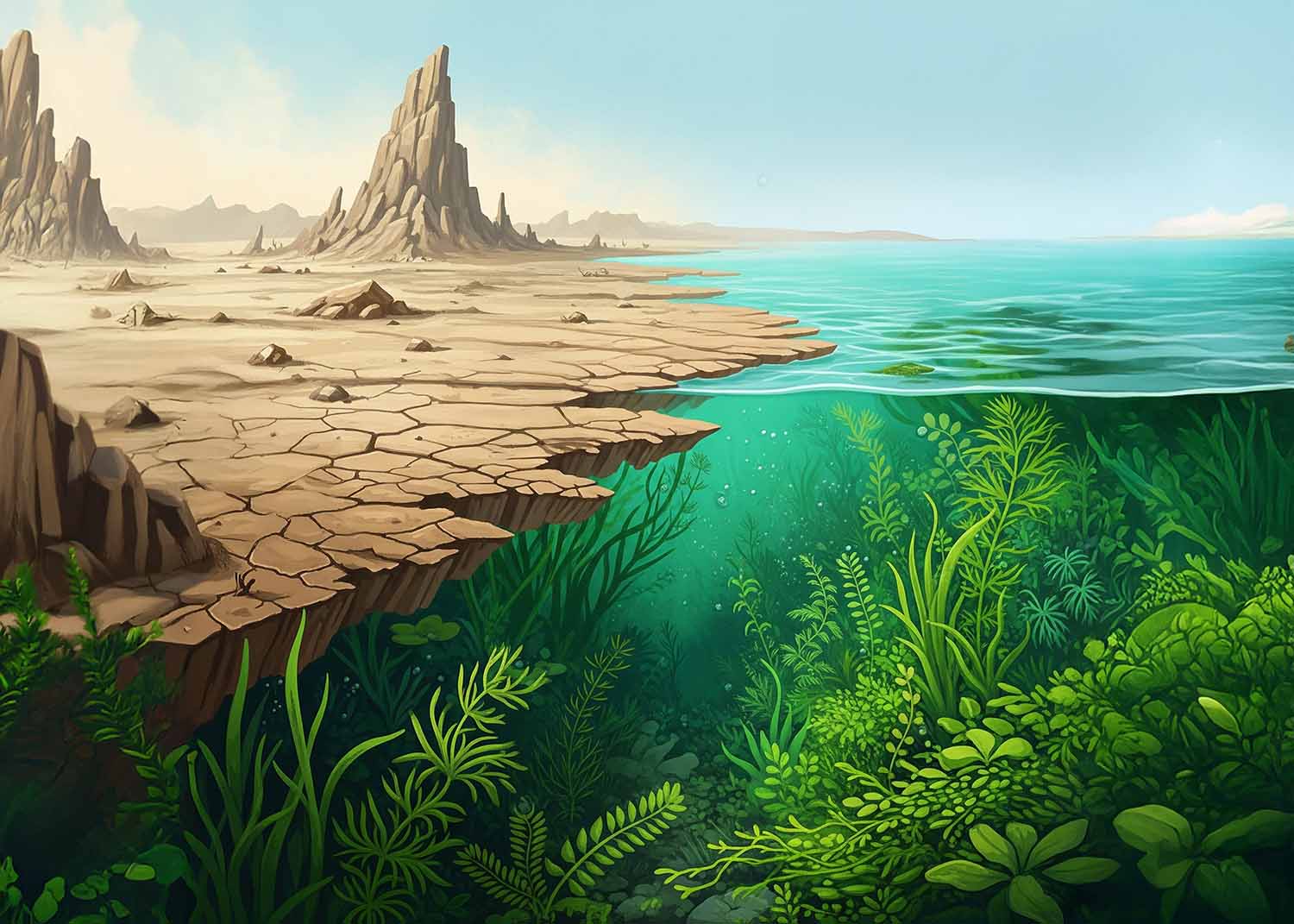
Leave a Reply to First Insects on Earth – Eoniverse Cancel reply